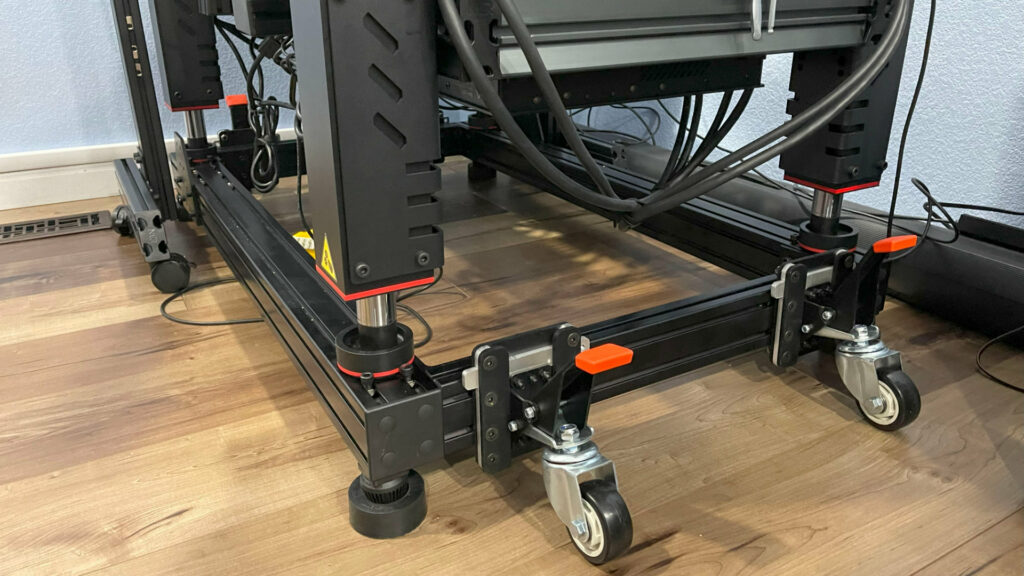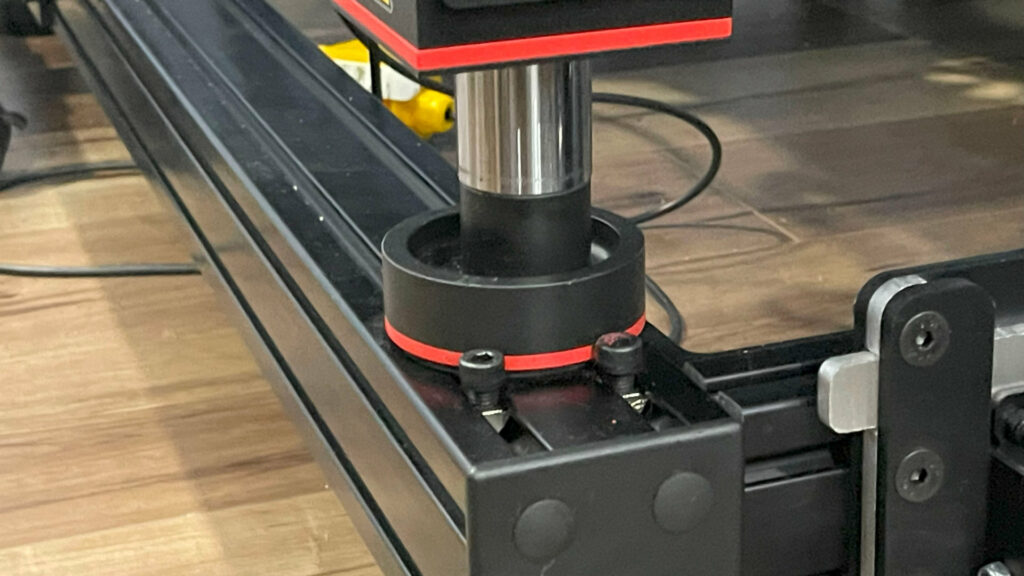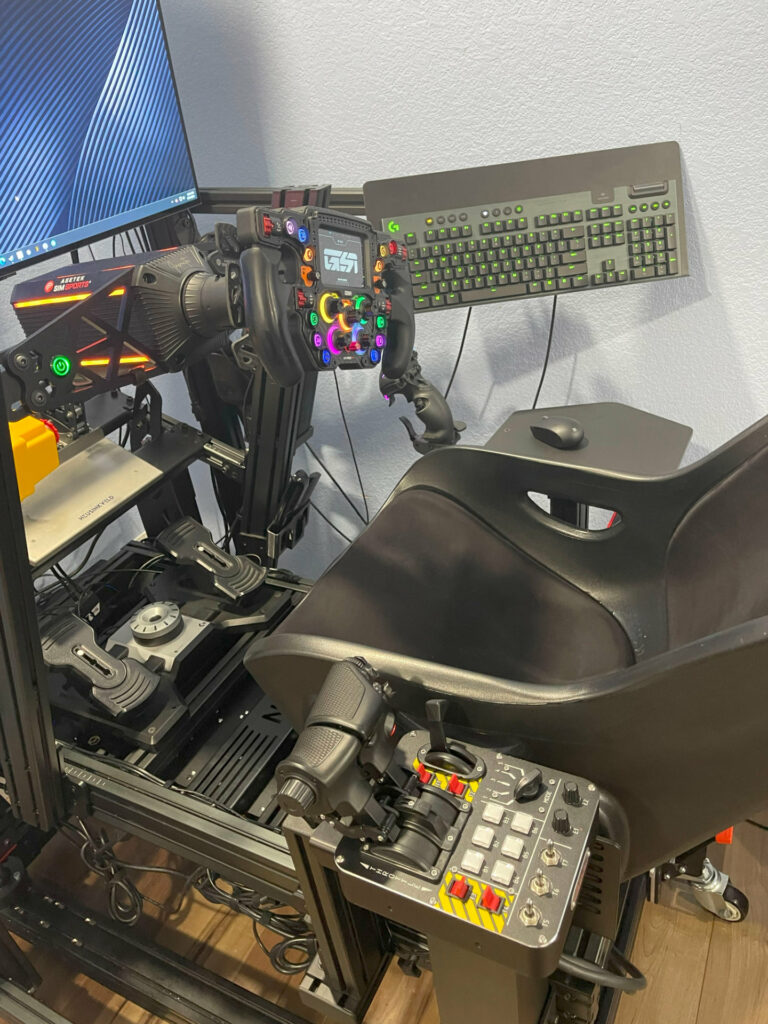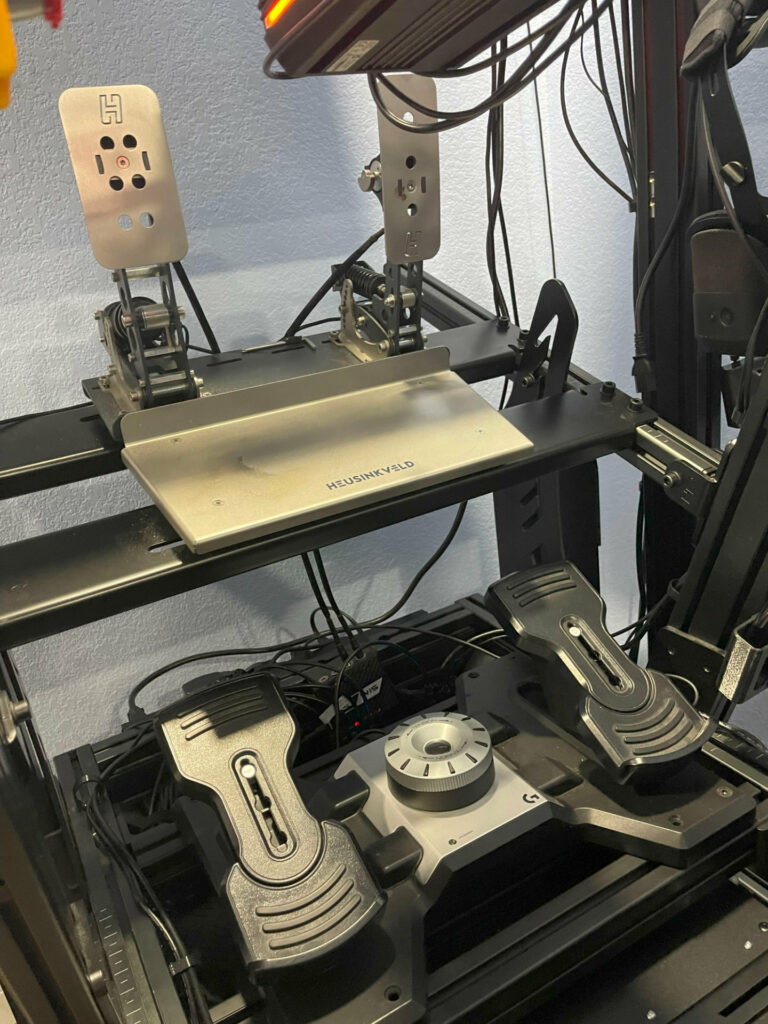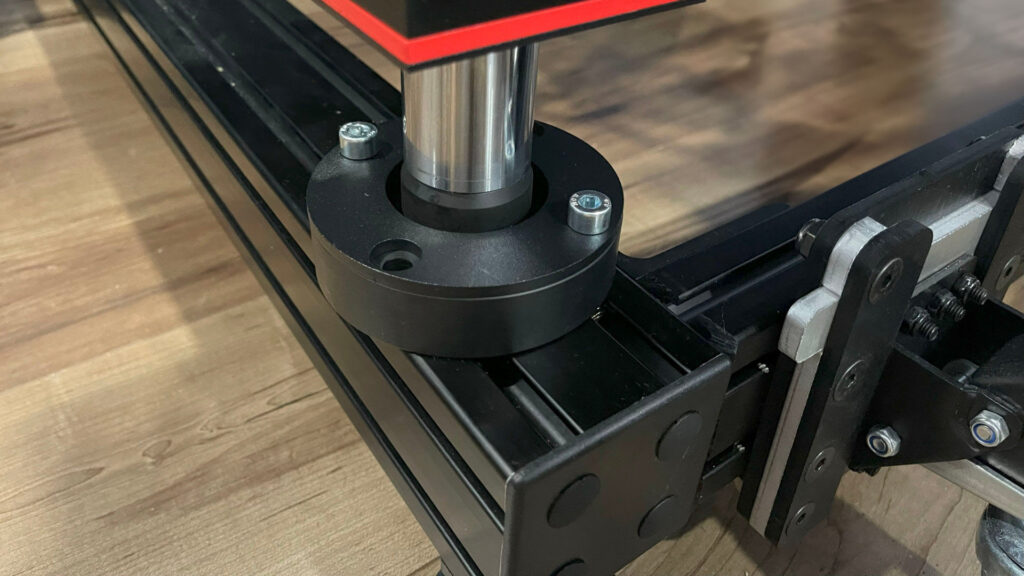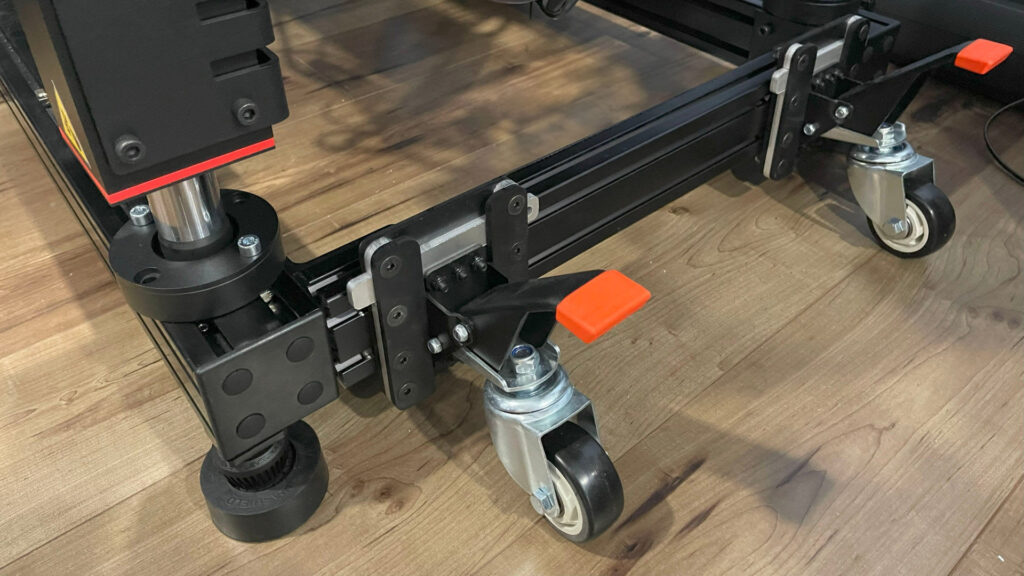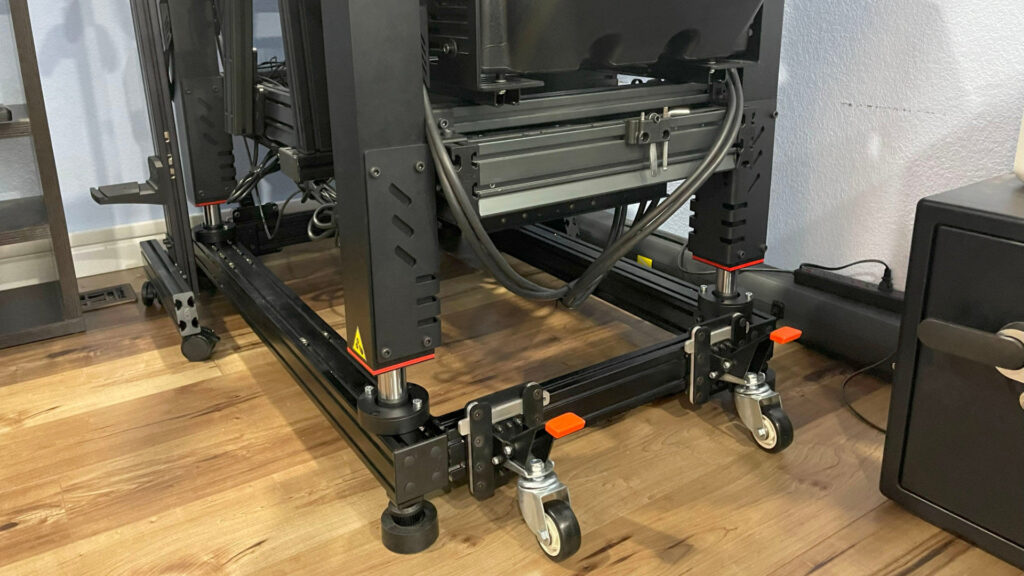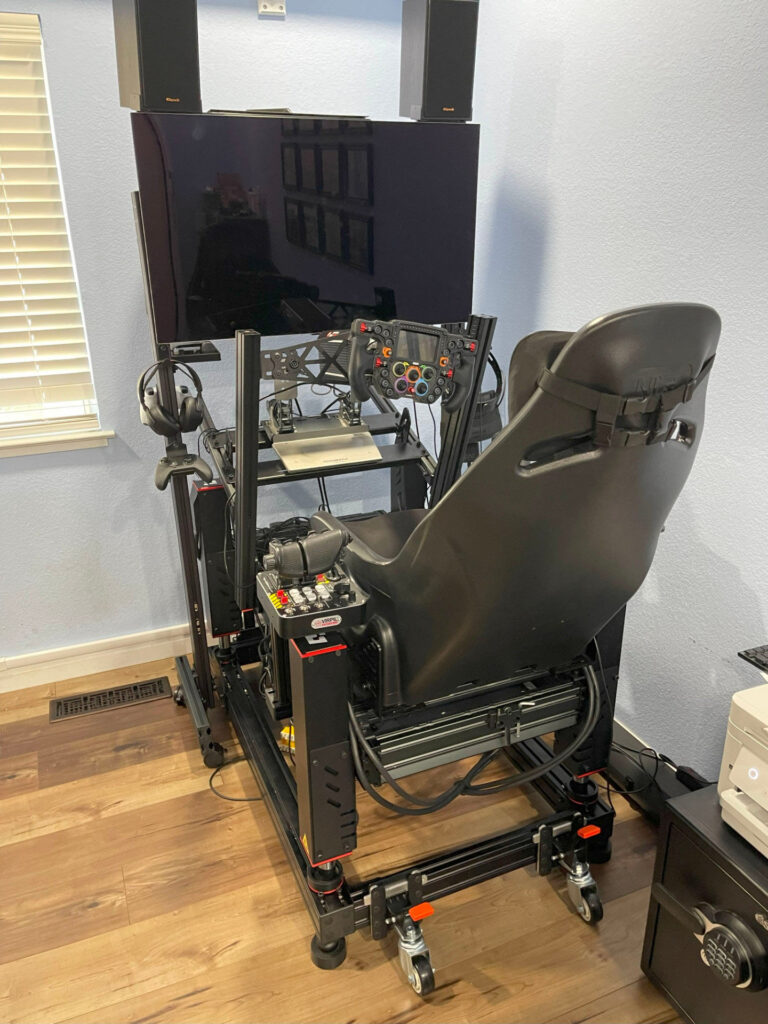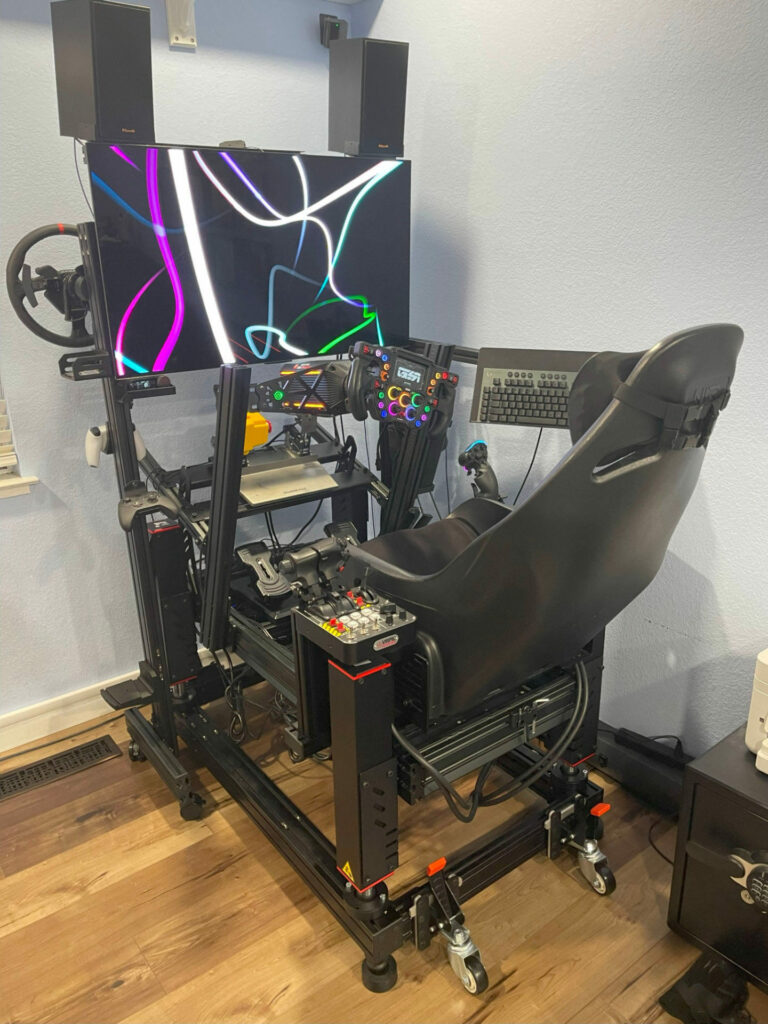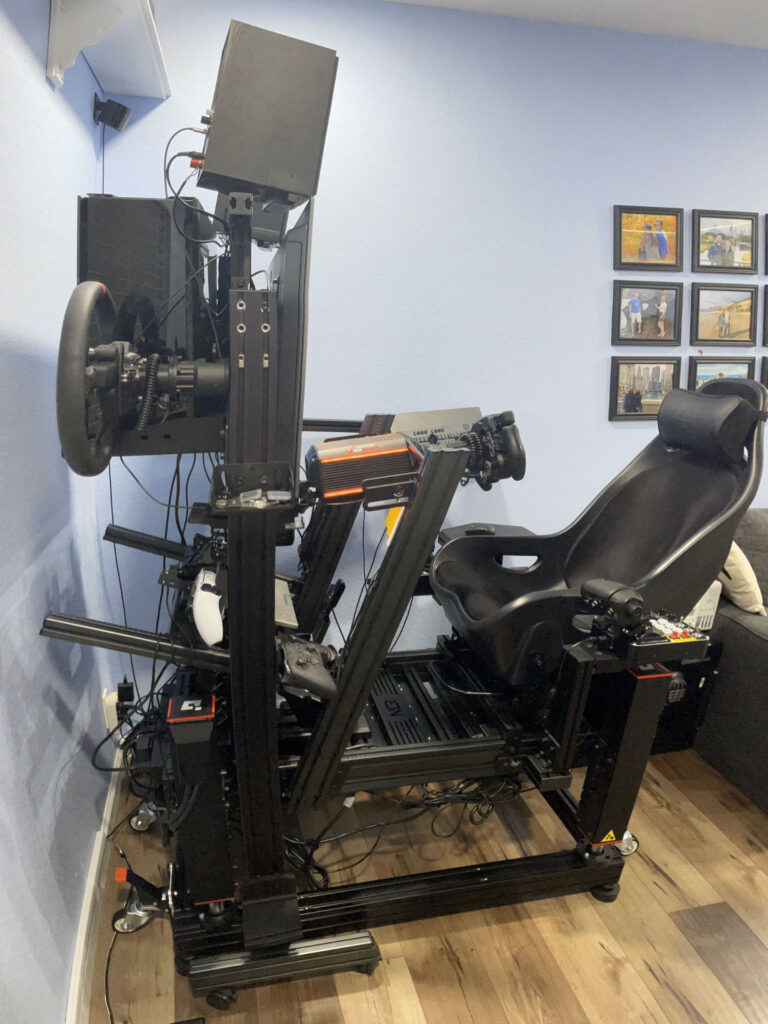Constantine, one of our clients, has been a passionate enthusiast of VR simulation for years. He spent approximately 15 months constructing his cockpit. He began from the ground up and progressively incorporated additional components into his cockpit over time, thereby creating a setup that is even more personalized to his specific needs and objectives. This customization allows for a swift transition of cockpit equipment between sim racing and flight simulation.
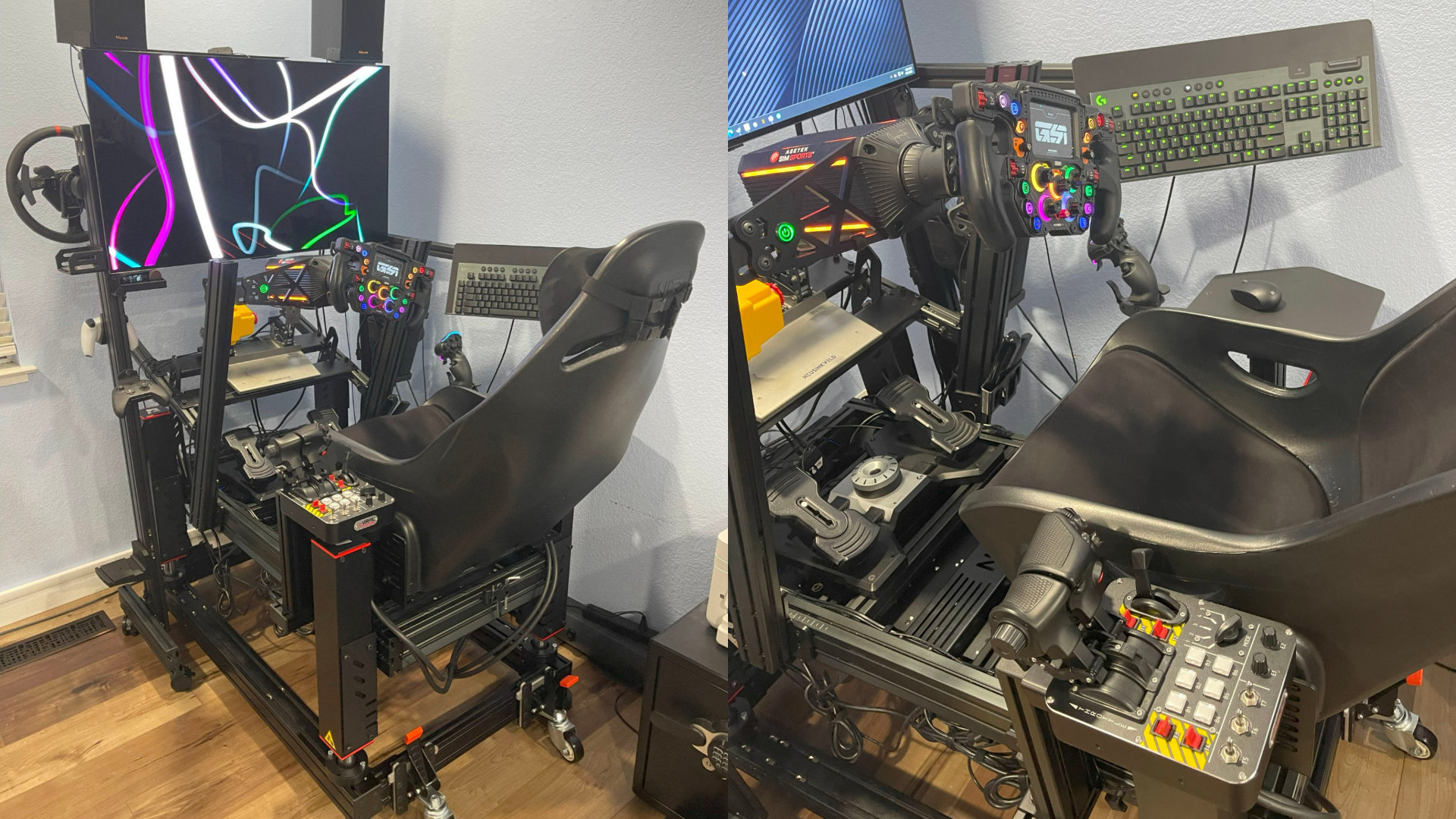
Flight & Racing Motion Cockpit
Let’s build the rig!
The rig is utilized exclusively for entertainment purposes, with no involvement in e-sports, nor any future plans in that direction. Over a span of 15 months, the rig underwent a gradual construction process. Initially, it comprised an NLR F-GT Elite along with an NLR Direct Monitor mount, chosen due to the desire for an extrusion rig for sim racing, allowing flexibility in transitioning between Formula and GT-3 positions. However, it was set up in a hybrid position closely resembling Formula style and remained unchanged. During that time, the primary game played was F1’22, which eventually transitioned to ACC, and currently, F1’23 is the main focus within a small league with friends, with occasional sessions of ACC. There was also an attempt to engage with iRacing, but issues related to motion compensation posed a challenge. In addition to simulation activities, the rig is employed for playing regular games on both PC and PS5. The PC is positioned behind the TV, while the PS5 is typically located at the bottom of the TV stand. However, only a 3D printed mount for the PS5 is visible in the photos, as the console itself is situated in a different room.
Though the owner’s children are currently too young to play racing games, occasional collaborative experiences in Forza Horizon occur, with the child taking control of the steering while the Constantine manages the pedals. We hope as the child grows, an interest in racing games will develop.
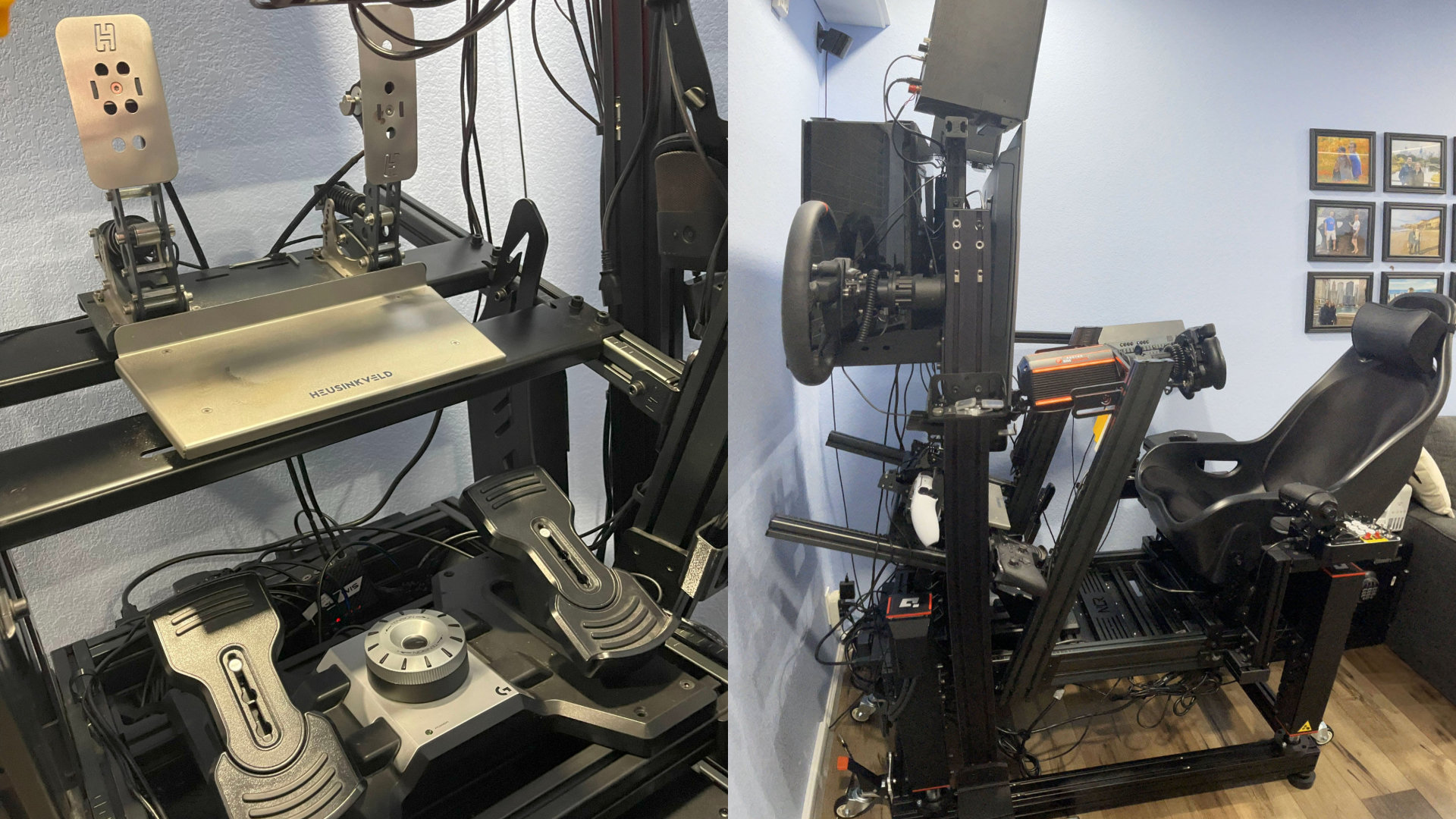
3DOF motion rig
Two fundamental restrictions have persisted from the outset and significantly influenced the decision-making process regarding customizations:
The rig should not occupy excessive space, as it is a home setup situated within a confined room. Consequently, there is no room for a triple-monitor setup, as a preference for VR for racing is predominant (specifically, Varjo Aero).
The rig must remain mobile, as it is positioned in a corner where it would be inconvenient to have it fixed. Thus, the ability to move the rig into the center of the room is crucial for convenience. An insight into the modification process reveals an initiative to create a dual-purpose rig. This modification was conceived to ensure that all equipment remained consistently connected, eliminating the need to spend time setting up or transferring equipment between games. Monstertech rail mounts were acquired and adapted to be positioned on the side of the rig, facilitating the movement of throttle and stick controls as necessary. Additionally, rudder pedals were integrated beneath the racing pedals, serving primarily as leg supports during regular gaming sessions, as the stick could fulfill rudder control functions.
The decision to introduce motion elements prompted a choice between d-box G5 and QS-220. The selection leaned towards Qubic due to its VR motion compensation capabilities, positive reviews from sim racing equipment reviewers, and its high performance. This decision, although considerably more costly, was undertaken to preempt any “what if I had chosen Qubic” scenarios in the future. The inclusion of four actuators necessitated a reevaluation of the rig’s design. A square frame was constructed at the base, accommodating the F-GT Elite with a direct monitor mount, along with the attached motion actuators. Although functional, this setup resulted in the movement of the TV and PC along with the rig and generated significant vibrations, raising concerns about potential damage to the TV and PC, as they were not designed for such use. Subsequently, a separate stand for the TV, speakers, and a PC shelf was established, which remained connected to the base but detached from the motion component of the rig. This segregation effectively eradicated motion-related disturbances in the TV and PC area, thus representing the final configuration of the rig.
Additionally, brackets with wheels were affixed to the base. These brackets, based on internet-sourced designs, enabled mobility. The rig typically rests on fixed legs, but when mobility is required, the wheels can be deployed to elevate the rig by approximately 1-2 cm, facilitating easy movement.
The details shared can serve as a source of inspiration for others, as the rig features numerous custom parts and modifications. The owner considers it to be in its final state and does not anticipate any further modifications. At this juncture, any additional improvements or additions to the rig are unclear, as it efficiently caters to sim racing, flight simulations, PC/PS5 gaming, and maintains a constant state of connection, eliminating the need for mode switching.
Constantine K.
USA, 2023
MOTION PLATFORM
The 3DOF motion platform QS-220. Innovative technology, modular and compact design, as well as the extremely quiet operation makes the 3DOF QS-220 as a perfect motion base not only for professional application but also for home users in various types of cockpits. Additional sets of QS-220 can be configured with dedicated cockpits from Qubic System product line.
CUSTOMER PROFILE
Constantine K.
SHORT INFO
Date of application: 2023
Localization: USA
